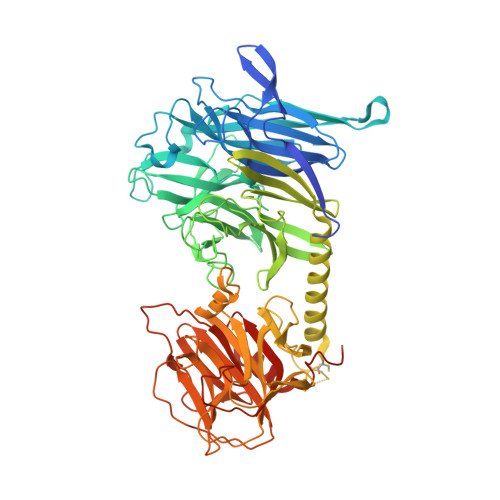The crystal structure and mode of action of trans-sialidase, a key enzyme of Trypanosoma cruzi pathogenesis
Buschiazzo, A., Amaya, M.F., Cremona, M.L., Frasch, A.C., Alzari, P.M.(2002) Mol Cell 10: 757-768
- PubMed: 12419220
- DOI: https://doi.org/10.1016/s1097-2765(02)00680-9
- Primary Citation of Related Structures:
1MR5, 1MS0, 1MS1, 1MS3, 1MS4, 1MS5, 1MS8, 1MS9 - PubMed Abstract:
Trans-sialidases (TS) are GPI-anchored surface enzymes expressed in specific developmental stages of trypanosome parasites like Trypanosoma cruzi, the etiologic agent of Chagas disease, and T. brucei, the causative agent of sleeping sickness. TS catalyzes the transfer of sialic acid residues from host to parasite glycoconjugates through a transglycosidase reaction that appears to be critical for T. cruzi survival and cell invasion capability. We report here the structure of the T. cruzi trans-sialidase, alone and in complex with sugar ligands. Sialic acid binding is shown to trigger a conformational switch that modulates the affinity for the acceptor substrate and concomitantly creates the conditions for efficient transglycosylation. The structure provides a framework for the structure-based design of novel inhibitors with potential therapeutic applications.
- Unité de Biochimie Structurale, CNRS URA 2185, Institut Pasteur, 25 rue du Dr. Roux, 75724, Paris, France.
Organizational Affiliation:


















